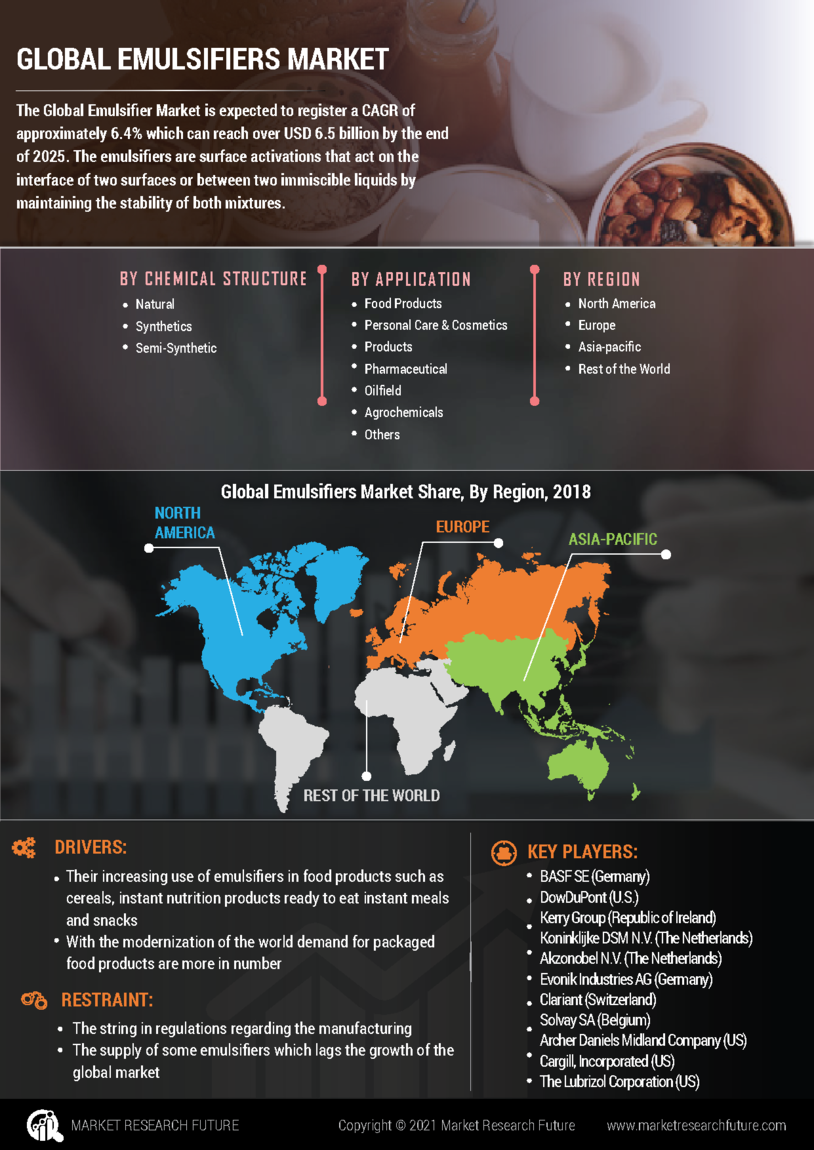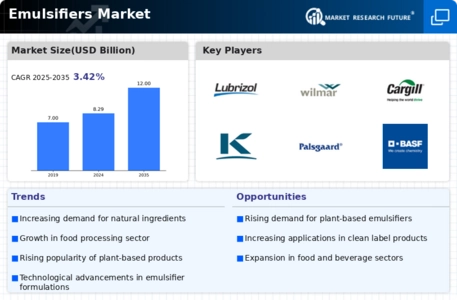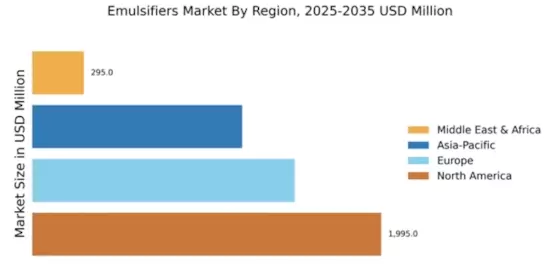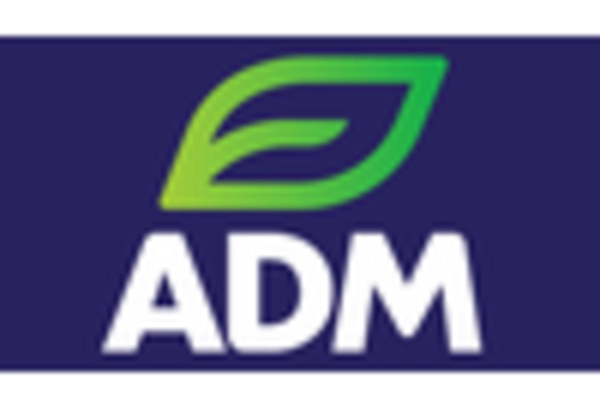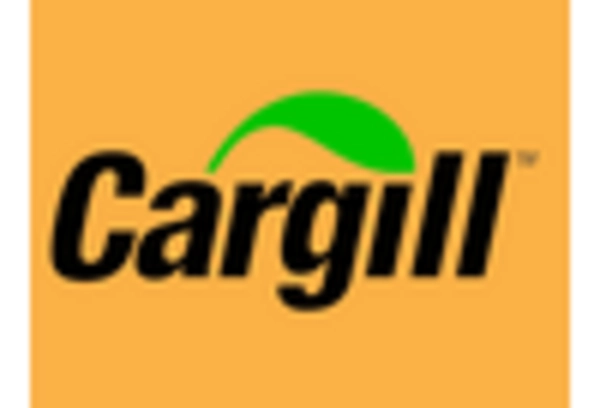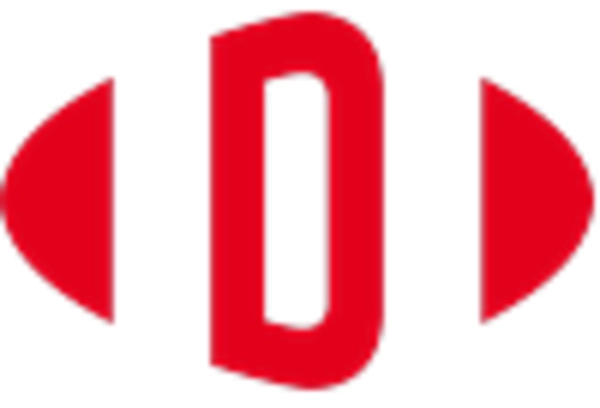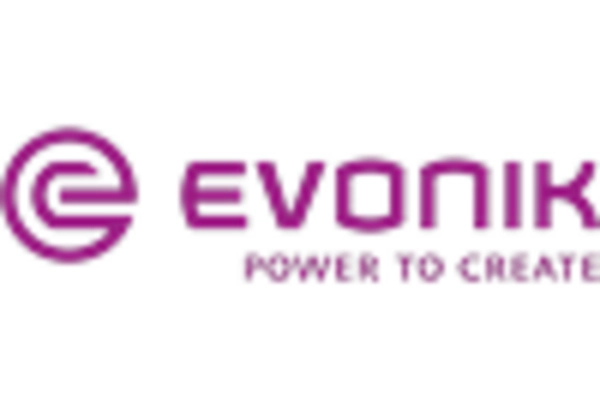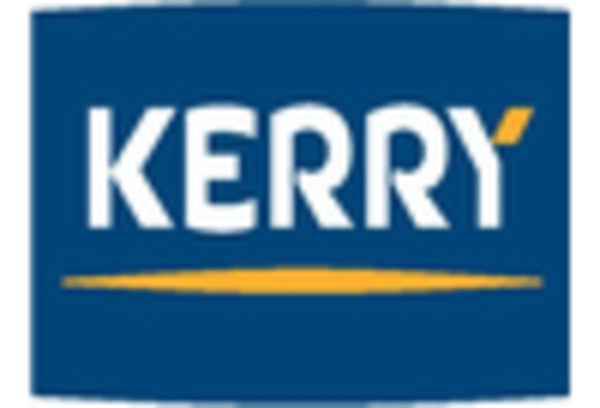Market Growth Projections
The Global Emulsifiers Market Industry is projected to experience steady growth, with a compound annual growth rate (CAGR) of 3.42% anticipated from 2025 to 2035. This growth trajectory reflects the increasing applications of emulsifiers across various sectors, including food, personal care, and pharmaceuticals. The market is expected to reach 12 USD Billion by 2035, driven by the rising demand for innovative and effective emulsifying agents. As industries continue to evolve and adapt to changing consumer preferences, the emulsifiers market is likely to expand, presenting opportunities for manufacturers and stakeholders alike.
Rising Demand in Food Industry
The Global Emulsifiers Market Industry is experiencing a notable surge in demand, particularly within the food sector. Emulsifiers Market play a crucial role in enhancing texture, stability, and shelf life of various food products. As consumer preferences shift towards processed and convenience foods, the need for effective emulsifiers becomes increasingly apparent. In 2024, the market is projected to reach 8.29 USD Billion, driven by the growing consumption of baked goods, dairy products, and sauces. This trend indicates a robust growth trajectory, as the industry adapts to meet evolving dietary habits and preferences.
Expansion in Personal Care Products
The Global Emulsifiers Market Industry is witnessing significant growth due to the expanding utilization of emulsifiers in personal care and cosmetic products. Emulsifiers Market are essential for creating stable formulations in creams, lotions, and other beauty products. As consumers become more conscious of product quality and ingredient safety, manufacturers are increasingly incorporating natural and biodegradable emulsifiers. This shift aligns with the broader trend towards sustainability in the personal care sector. The demand for emulsifiers in this industry is expected to contribute substantially to the overall market growth, reflecting a dynamic interplay between consumer preferences and product innovation.
Growth in Pharmaceutical Applications
The Global Emulsifiers Market Industry is also benefiting from the increasing use of emulsifiers in pharmaceutical formulations. Emulsifiers Market are vital for enhancing the bioavailability of active ingredients in various drug delivery systems. As the pharmaceutical sector continues to innovate, the demand for effective emulsifiers is likely to rise. This trend is particularly relevant in the development of emulsified drug formulations, which can improve patient compliance and therapeutic efficacy. The integration of emulsifiers in pharmaceuticals is expected to bolster market growth, as the industry seeks to optimize drug delivery mechanisms and enhance patient outcomes.
Sustainability Trends Driving Natural Emulsifiers
The Global Emulsifiers Market Industry is increasingly influenced by sustainability trends, with a growing preference for natural emulsifiers derived from plant sources. Consumers are becoming more aware of the environmental impact of synthetic ingredients, prompting manufacturers to explore eco-friendly alternatives. This shift towards natural emulsifiers not only aligns with consumer preferences but also meets regulatory demands for cleaner labels. As the market adapts to these sustainability trends, the demand for natural emulsifiers is expected to rise, contributing to the overall growth of the industry. The projected market value of 12 USD Billion by 2035 underscores this potential.
Technological Advancements in Emulsifier Production
The Global Emulsifiers Market Industry is poised for growth due to ongoing technological advancements in emulsifier production processes. Innovations in manufacturing techniques, such as the development of high-performance emulsifiers and improved formulation methods, are enhancing product efficacy and application versatility. These advancements enable manufacturers to create more effective emulsifiers that cater to diverse industry needs, from food to pharmaceuticals. As the market evolves, the introduction of novel emulsifiers is likely to drive competition and foster further growth, positioning the industry for a promising future.
